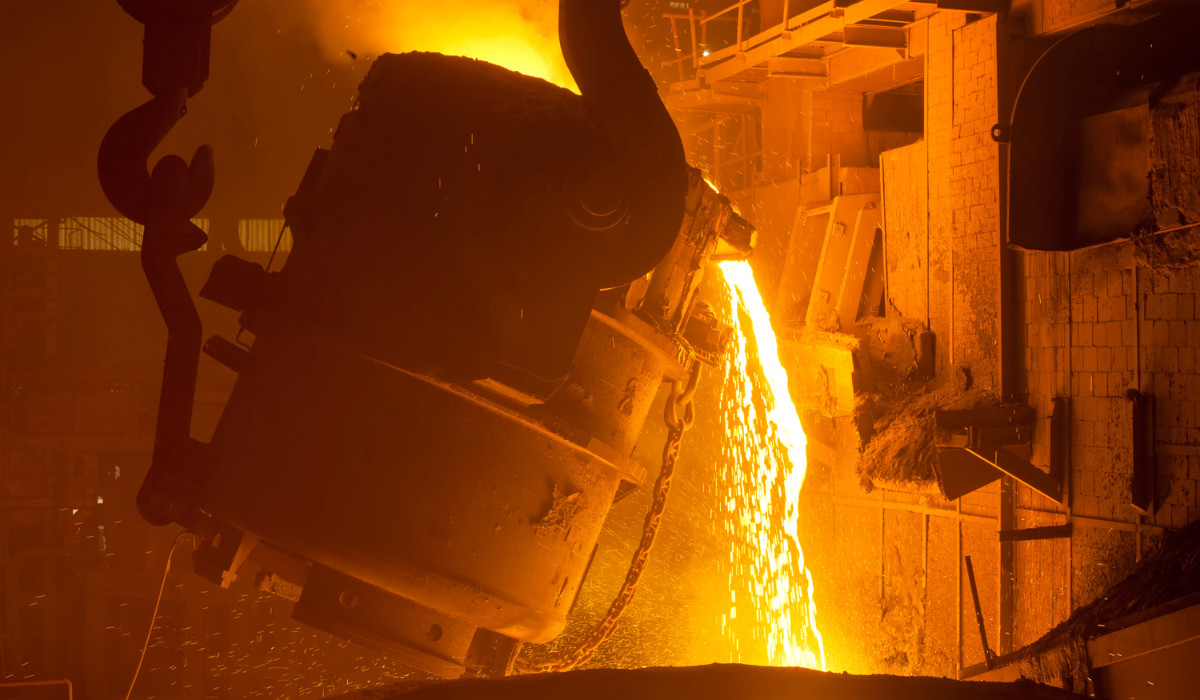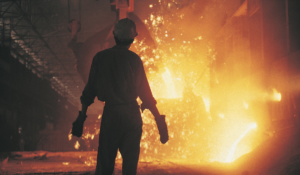On Feb. 20, 2023, a Bedford, Ohio, foundry explosion rocked a small town, claiming the life of one man, and severely injuring 15 others. Tragically, it serves as a reminder that workplace safety remains paramount, especially in industries prone to hazardous conditions.
Now, following an recent investigation by OSHA, the company faces numerous penalties, in addition to the devastating results of the explosion itself.
Here, we’ll examine the OSHA investigation’s findings, and emphasize the significance of adhering to established safety protocols to prevent such unfortunate incidents.
Let’s break it down.
Related Article: Middleton Foundry Cited with 14 OSHA Violations

The Unfortunate Bedford Foundry Explosion
In a news release published on August 14, 2023; OSHA announced that a Bedford foundry explosion resulted in the loss of a maintenance supervisor’s life, along with injuries to 15 employees, serving as a somber reminder of the potential risks posed by industrial settings.
The explosion occurred during an inspection of a furnace used for smelting solid metals. Employees were inspecting a water leak in the furnace, but failed to follow proper lockout/tagout procedures. Unfortunately, water became trapped among hot metal, turned to steam, and caused the explosion.
The investigation indicated that the foundry operator did not adequately ensure the implementation of lockout/tag out procedures, which are crucial for safeguarding employees during equipment inspections.
- See OSHA Standard on Lockout/Tagout [1910.147].
- See OSHA Guideline on Control of Hazardous Energy [Lockout/Tagout].
Related Article: The Critical Importance of a Workplace Evacuation Plan
A Call for Adherence to Safety Protocols
“This terrible tragedy could have been avoided if the employer followed well-known machine safety standards that are meant to prevent this type of explosion,” said OSHA Area Director Howard Eberts in Cleveland, Ohio.
Eberts also emphasized that employers must follow mandatory safety procedures and provide comprehensive training to mitigate risks for workers. The Bedford foundry explosion serves as a stark reminder that neglecting safety measures can have dire consequences.
While industries like foundries present unique challenges, comprehensive training, adherence to safety protocols, and vigilant maintenance can significantly mitigate risks.
OSHA’s machine guarding and control of hazardous energy resources provide valuable information for employers, enabling them to take proactive measures to limit worker exposures to machine hazards.
- See OSHA’s guideline on machine guarding.
- See OSHA’s guideline on control of hazardous energy.
Next Steps
In response to the incident, OSHA issued six serious violations against the foundry, proposing penalties totaling $62,500. Additionally, the foundry remains closed as investigations continue.
Such penalties highlight the need for companies to prioritize worker safety and comply with regulations to prevent recurrence of such incidents.
They have 15 business days from receipt of these citations and penalties to comply, request an informal conference with OSHA’s area director, or contest the findings before the independent Occupational Safety and Health Review Commission.
What to Do In an Event of Explosion or Major Incident
In the event of an explosion, or any catastrophic incident, swift and well-informed actions can make a crucial difference in minimizing harm to workers and mitigating potential damage. Here are five essential occupational health tips to follow:
1. Activate Emergency Response Protocol Immediately: Upon hearing or witnessing an incident, activate the established emergency response protocol without delay. Sound alarms, alert on-site personnel, and communicate the situation to all affected areas.
Time is of the essence in ensuring everyone’s safety.
2. Evacuate to Designated Safe Zones: Ensure that all workers are aware of designated evacuation routes and safe assembly points.
Evacuate the area promptly and move to these safe zones to minimize exposure to hazardous materials and potential secondary explosions. Avoid crowded areas and maintain a safe distance from the site of the incident.
3. Prioritize Communication and Accountability: Use clear and concise communication channels to account for all personnel. Ensure that everyone is present at the designated safe zones and report any missing individuals to emergency responders.
Effective communication helps prevent confusion and ensures that no one is left behind.
4. Render First Aid and Seek Medical Attention: Attend to any immediate injuries by providing basic first aid if you are trained to do so.
For severe injuries, call for professional medical assistance immediately. Prompt medical attention can significantly improve the outcome for anyone who’s critically injured.
5. Stay Informed and Follow Safety Updates: Remain informed about the situation by listening to official updates and instructions from emergency responders or supervisors.
Follow any additional safety instructions provided by authorities to ensure your well-being and comply with ongoing response efforts.
Key Takeaways
The Bedford foundry explosion underscores the paramount importance of occupational health and safety in high-risk environments.
As an employer, you must prioritize the well-being of your workforce by strictly following established safety procedures, providing adequate training, and maintaining equipment properly.
By learning from incidents like this and embracing a culture of safety, companies can create workplaces where employees are protected and empowered to perform their duties without unnecessary risks.
About Worksite Medical
In most cases, OSHA requires medical surveillance testing, and at no cost to employees.
Worksite Medical makes that program easier with mobile medical testing.
We conduct on-site respirator fit tests, as well as audiometric exams, pulmonary function tests and heavy metal lab work, right on your job site. We also keep accurate, easy-to-access medical records for your convenience. You’ll keep your employees at work, and stay ahead of OSHA inspections.




